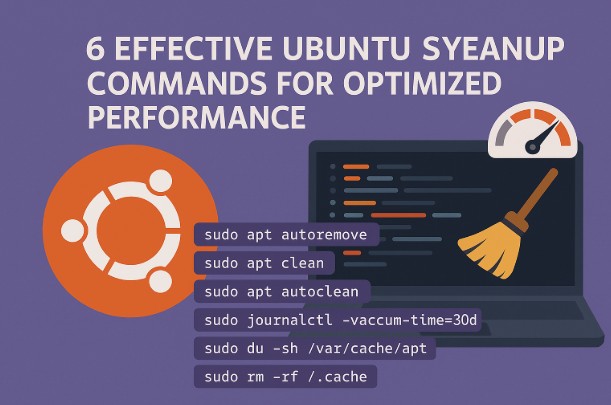Managing the complexity of a Kubernetes cluster, especially one running on Amazon Elastic Kubernetes Service (EKS), can feel like navigating a labyrinth. Ensuring the health, performance, and security of your applications deployed on EKS requires robust monitoring and observability. This is where Amazon EKS Observability comes into play. This comprehensive guide will demystify the intricacies of EKS observability, providing you with the tools and knowledge to effectively monitor and troubleshoot your EKS deployments, ultimately improving application performance and reducing downtime.
Table of Contents
Understanding the Importance of Amazon EKS Observability
Effective Amazon EKS Observability is paramount for any organization running applications on EKS. Without it, identifying performance bottlenecks, debugging application errors, and ensuring security becomes significantly challenging. A lack of observability can lead to increased downtime, frustrated users, and ultimately, financial losses. By implementing a comprehensive observability strategy, you gain valuable insights into the health and performance of your EKS cluster and its deployed applications. This proactive approach allows for faster identification and resolution of issues, preventing major incidents before they impact your users.
Key Components of Amazon EKS Observability
Building a robust Amazon EKS Observability strategy involves integrating several key components. These components work in synergy to provide a holistic view of your EKS environment.
1. Metrics Monitoring
Metrics provide quantitative data about your EKS cluster and application performance. Key metrics to monitor include:
- CPU utilization
- Memory usage
- Network traffic
- Pod restarts
- Deployment status
Tools like Amazon CloudWatch, Prometheus, and Grafana are commonly used for collecting and visualizing these metrics. CloudWatch integrates seamlessly with EKS, providing readily available metrics out of the box.
2. Logging
Logs offer crucial contextual information about events occurring within your EKS cluster and applications. Effective log management enables faster debugging and incident response.
- Application logs: Track application-specific events and errors.
- System logs: Monitor the health and status of Kubernetes components.
- Audit logs: Record security-relevant events for compliance and security analysis.
Popular logging solutions for EKS include the Amazon CloudWatch Logs, Fluentd, and Elasticsearch.
3. Tracing
Distributed tracing provides a detailed view of requests as they flow through your microservices architecture. This is crucial for understanding the performance of complex applications deployed across multiple pods and namespaces.
Tools like Jaeger, Zipkin, and AWS X-Ray offer powerful distributed tracing capabilities. Integrating tracing into your applications helps identify performance bottlenecks and pinpoint the root cause of slow requests.
4. Amazon EKS Observability with CloudWatch
Amazon CloudWatch is a fully managed monitoring and observability service deeply integrated with EKS. It offers a comprehensive solution for collecting, analyzing, and visualizing metrics, logs, and events from your EKS cluster. CloudWatch provides a unified dashboard for monitoring the health and performance of your EKS deployments, offering invaluable insights for operational efficiency. Setting up CloudWatch integration with your EKS cluster is typically straightforward, leveraging built-in integrations and requiring minimal configuration.
Advanced Amazon EKS Observability Techniques
Beyond the foundational components, implementing advanced techniques further enhances your observability strategy.
1. Implementing Custom Metrics
While built-in metrics provide a solid foundation, custom metrics allow you to gather specific data relevant to your applications and workflows. This provides a highly tailored view of your environment’s performance.
2. Alerting and Notifications
Configure alerts based on predefined thresholds for critical metrics. This enables proactive identification of potential problems before they impact your users. Integrate alerts with communication channels like Slack, PagerDuty, or email for timely notifications.
3. Using a Centralized Logging and Monitoring Platform
Centralizing your logs and metrics simplifies analysis and reduces the complexity of managing multiple tools. This consolidated view improves your ability to diagnose issues and resolve problems quickly. Tools like Grafana and Kibana provide dashboards that can aggregate data from various sources, providing a single pane of glass view.
Amazon EKS Observability Best Practices
Implementing effective Amazon EKS Observability requires adherence to best practices:
- Establish clear monitoring objectives: Define specific metrics and events to monitor based on your application’s needs.
- Automate monitoring and alerting: Leverage infrastructure-as-code (IaC) to automate the setup and management of your monitoring tools.
- Use a layered approach: Combine multiple monitoring tools to capture a holistic view of your EKS environment.
- Regularly review and refine your monitoring strategy: Your observability strategy should evolve as your applications and infrastructure change.
Frequently Asked Questions
1. What is the cost of implementing Amazon EKS Observability?
The cost depends on the specific tools and services you use. Amazon CloudWatch, for example, offers a free tier, but costs increase with usage. Other tools may have their own pricing models. Careful planning and consideration of your needs will help manage costs effectively.
2. How do I integrate Prometheus with my EKS cluster?
You can deploy a Prometheus server within your EKS cluster and configure it to scrape metrics from your pods using service discovery. There are various community-maintained Helm charts available to simplify this process. Properly configuring service discovery is key to successful Prometheus integration.
3. What are some common challenges in setting up Amazon EKS Observability?
Common challenges include configuring appropriate security rules for access to monitoring tools, dealing with the complexity of multi-tenant environments, and managing the volume of data generated by a large EKS cluster. Careful planning and the use of appropriate tools can mitigate these challenges.
4. How do I ensure security within my Amazon EKS Observability setup?
Security is paramount. Employ strong authentication and authorization mechanisms for all monitoring tools. Restrict access to sensitive data, use encryption for data in transit and at rest, and regularly review security configurations to identify and address vulnerabilities. Following AWS best practices for security is highly recommended.

Conclusion
Achieving comprehensive Amazon EKS Observability is crucial for the successful operation of your applications on EKS. By integrating metrics monitoring, logging, tracing, and leveraging powerful tools like Amazon CloudWatch, you gain the insights necessary to proactively identify and address issues. Remember to adopt best practices, choose tools that align with your needs, and continuously refine your observability strategy to ensure the long-term health and performance of your EKS deployments. Investing in a robust Amazon EKS Observability strategy ultimately translates to improved application performance, reduced downtime, and a more efficient operational workflow. Don’t underestimate the value of proactive monitoring – it’s an investment in the stability and success of your cloud-native applications. Thank you for reading the DevopsRoles page!
Further Reading:
Amazon EKS Documentation
Amazon CloudWatch Documentation
Kubernetes Documentation
